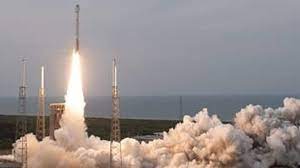
NASA to test nuclear-powered spacecraft by 2027: NASA and DARPA (US military’s research and development agency) will join hands to develop nuclear-powered rockets that could fly astronauts to Mars.
January 2023 Current Affairs Quiz
This mission could allow spacecraft to travel faster, reduce transit time, and have other benefits. US Space agency could develop and demonstrate advanced nuclear thermal propulsion technology as soon as 2027. NASA also believes that they could be ready to send humans to Mars by the late 2030s. With the help of this new technology, astronauts could journey to and from deep space faster than ever – a major capability to prepare for crewed missions to Mars,” said NASA Administrator Bill Nelson. “Congratulations to both NASA and DARPA on this exciting investment, as we ignite the future, together.”
Using a nuclear thermal rocket allows for faster transit time, reducing risk for astronauts. Reducing transit time is a key component for human missions to Mars, as longer trips require more supplies and more robust systems. Maturing faster, more efficient transportation technology will help NASA meet its Moon to Mars Objectives. Other benefits to space travel include increased science payload capacity and higher power for instrumentation and communication. In a nuclear thermal rocket engine, a fission reactor is used to generate extremely high temperatures. The engine transfers the heat produced by the reactor to a liquid propellant, which is expanded and exhausted through a nozzle to propel the spacecraft. Nuclear thermal rockets can be three or more times more efficient than conventional chemical propulsion. “NASA has a long history of collaborating with DARPA on projects that enable our respective missions, such as in-space servicing,” said NASA Deputy Administrator Pam Melroy. “Expanding our partnership to nuclear propulsion will help drive forward NASA’s goal to send humans to Mars.”
NASA Administrator: Bill Nelson





